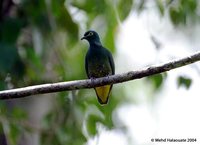|
| Query: bird | Result: 8153rd of 32675 | |
White-breasted Fruit-Dove - Ptilinopus rivoli

| Resolution: 700x508
File Size: 51705 Bytes
Date: 2004:08:08 11:04:33
Camera: Canon EOS 10D (Canon)
F number: f/5.6
Exposure: 1/250 sec
Focal Length: 500/1
Upload Date: 2008:07:13 22:03:03
|
|
|

